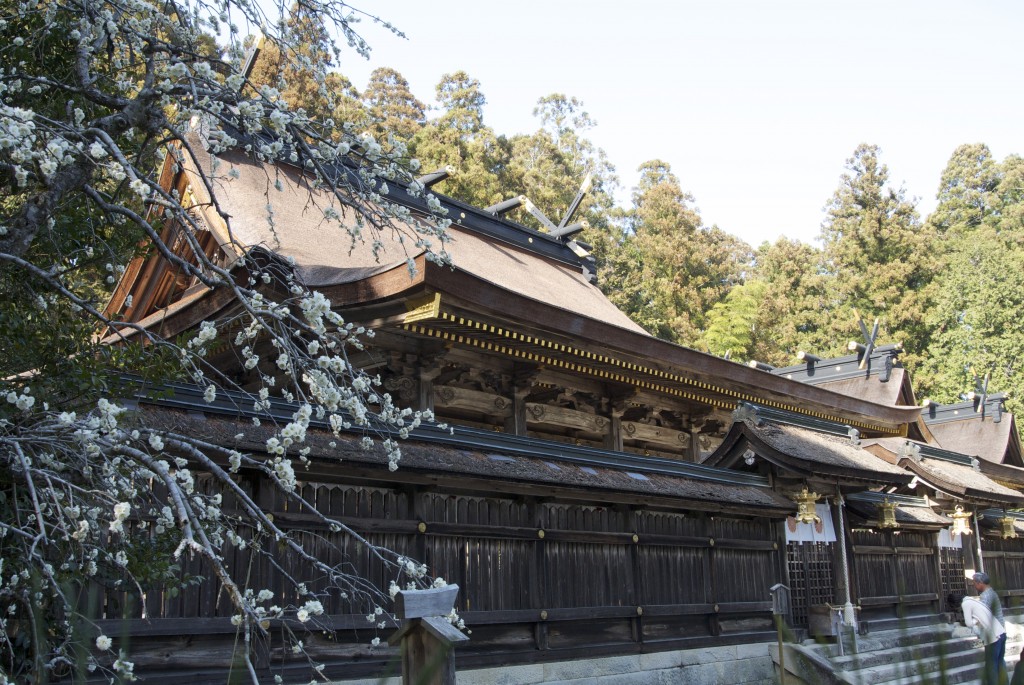
Springtime at Hongu as the sunshine caresses the immaculate cypress bark roofs
Water plays a big part in the three big Kumano shrines. Hayatama Taisha sits near the sea. Nachi is by a waterfall. Hongu for most of its life was on an islet at the confluence of streams which merged into the Kumano River. For early humans in the Kii Hanto, water was a lifeline and a vital means of transport. Gratitude for its blessings and respect for its power played a central role in their spirituality.
In 1889, ironically, Hongu Shrine was swept away in a flood. Sensibly enough, it was decided to rebuild on a nearby hill. The old location is now marked by what is claimed to be the biggest torii in Japan.
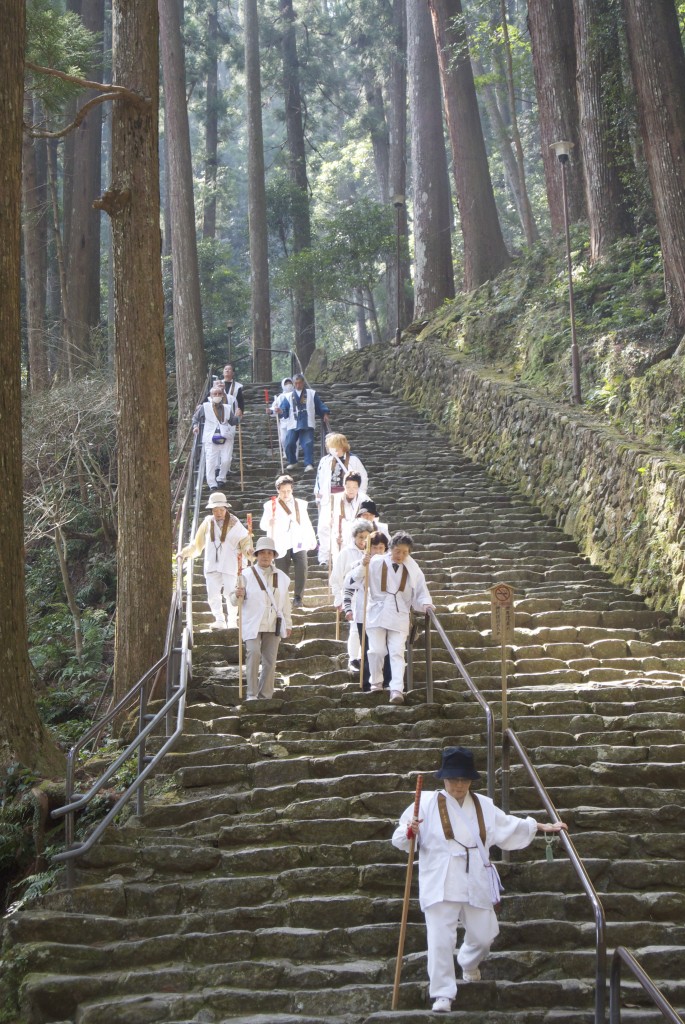
Pilgrims... but did they arrive by bus?
The approach to Hongu leads up a flight of 158 steps flanked by woods. At the top is an attractive shrine in the characteristic Kumano style with chigi on the roofs. The four honden (kami sanctuaries) are lined up in a row, as can be seen in the picture above.
The main kami is Ketsumimiko, a deity of tree and forest appropriately enough since the area is thickly wooded. In medieval times, the kami was associated with Amida and the Pure Land sect. As with the other Kumano shrines, Hongu was a centre of syncretic beliefs and embraced mountain asceticism (shugendo).
The shrine stands at the nexus of pilgrimage routes running through Kumano. From the 11th to 14th centuries the area was the nation’s prime destination for pilgrimages, drawing people of all faiths to the mighty Shinto-Buddhist complexes. There were three main routes, one of which had four branches running off it. Some were deliberately difficult, leading through mountain passes over 1000 meters high. The path was only a meter wide in places, and such was the volume of traffic that a popular expression arose about the ‘ant-trail to Kumano’.
At the peak of their popularity, everyone from aristocrat to the common man took part, and it’s said one emperor completed the pilgrimage 23 times, accompanied by a retinue of some 1000 people. From Kyoto it took about a month to Hongu, and a whole support system developed with guides, stone markers and resting spots. Still today you can see pilgrims along the trail, though whether they’ve arrived on foot or by bus is not always clear!
Not far away from Hongu is the only hot spring to be registered with a World Heritage site, called Tsuboyu. Here’s what Wikipedia has to say on the subject:
“In Hongū pilgrims often did purification rites in Yunomine Onsen (Yunomine Hotspring). Tsuboyu is a small cabin on the creek that runs through this isolated onsen village. Inside is a small rocky bath that is the only World Heritage hotspring that you can bath in in the world. For 750 yen you can reserve this historic bath for 30 minutes. It was not only used for purification rites but for its legendary healing effects. The Kumano Kodō Dainichi-goe route links Kumano Hongū Taisha with Yunomine. It is 2 km long and is a steep climb, and descends over a small pass.
From Kumano Hongū Taisha most pilgrims went by boat on the Kumano River to Kumano Hayatama Taisha in the coastal town of Shingū. This 40 km section of the Kumano Kodō is also World Heritage and the only river pilgrimage route in the world that is registered as a UNESCO World Heritage. There is also an overland route which links Kumano Hongū Taisha with Kumano Nachi Taisha. Most pilgrims take two days to complete this walk staying in the small town of Koguchi.”
******************************************************************************
For more on Hongu Taisha, and on the other Kumano shrines, see p. 246-256 of Cali and Dougill’s Shinto Shrines (Univ of Hawaii Press).
******************************************************************************
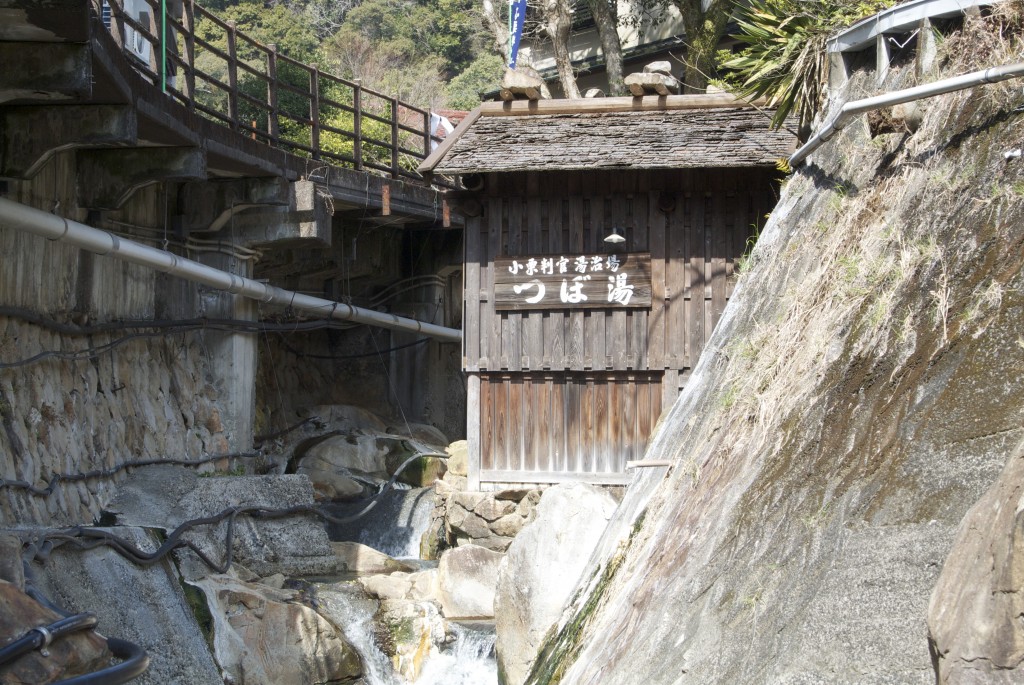
The world's only World Heritage hot spring open to the public
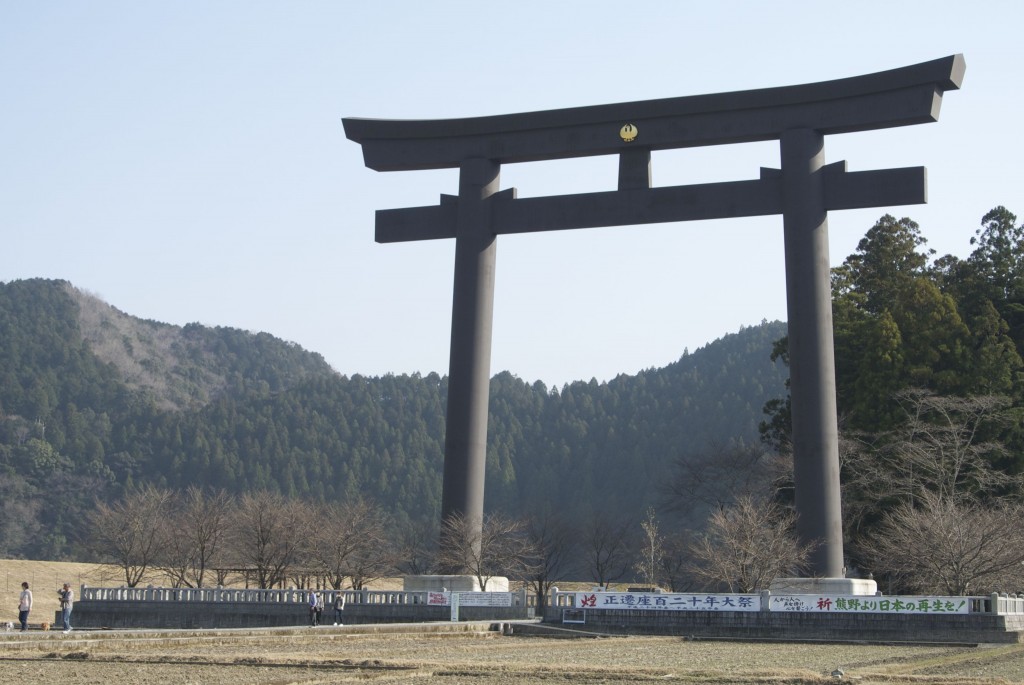
Japan's biggest torii? It stands on the spot where the Hongu shrine used to, before it got swept away
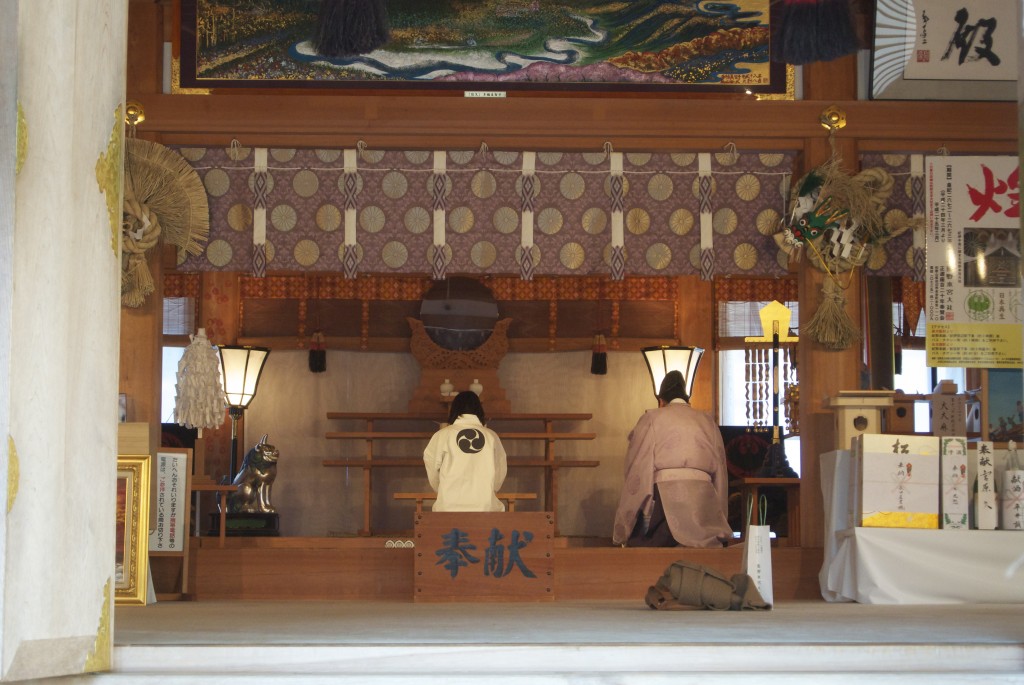
Priest conducting a ritual for a private individual
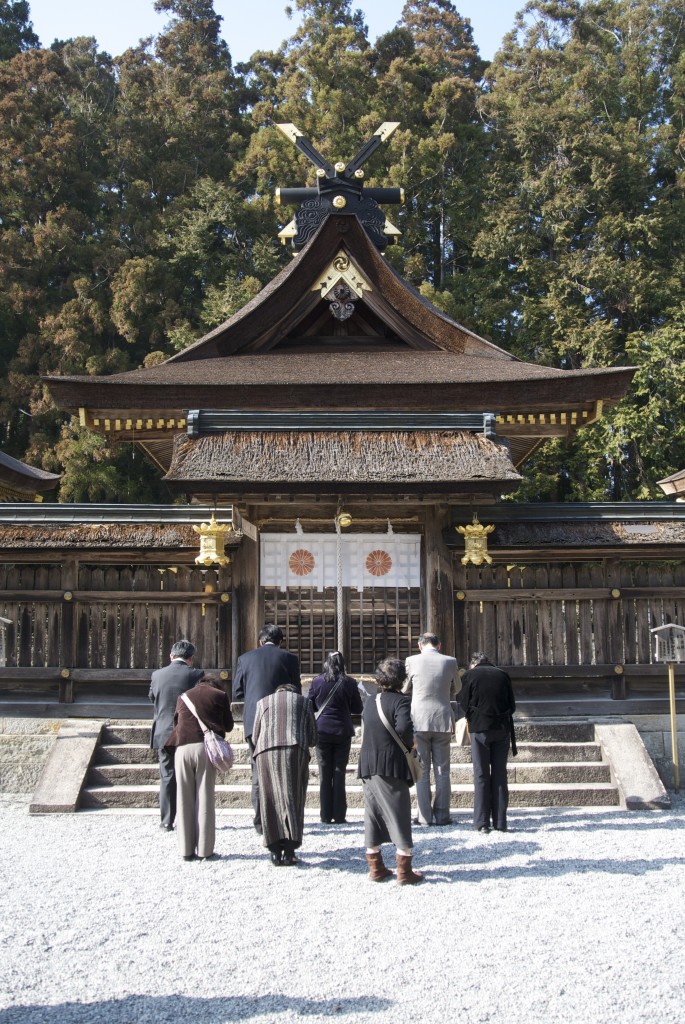
Group prayer in front of one of the Honden structures
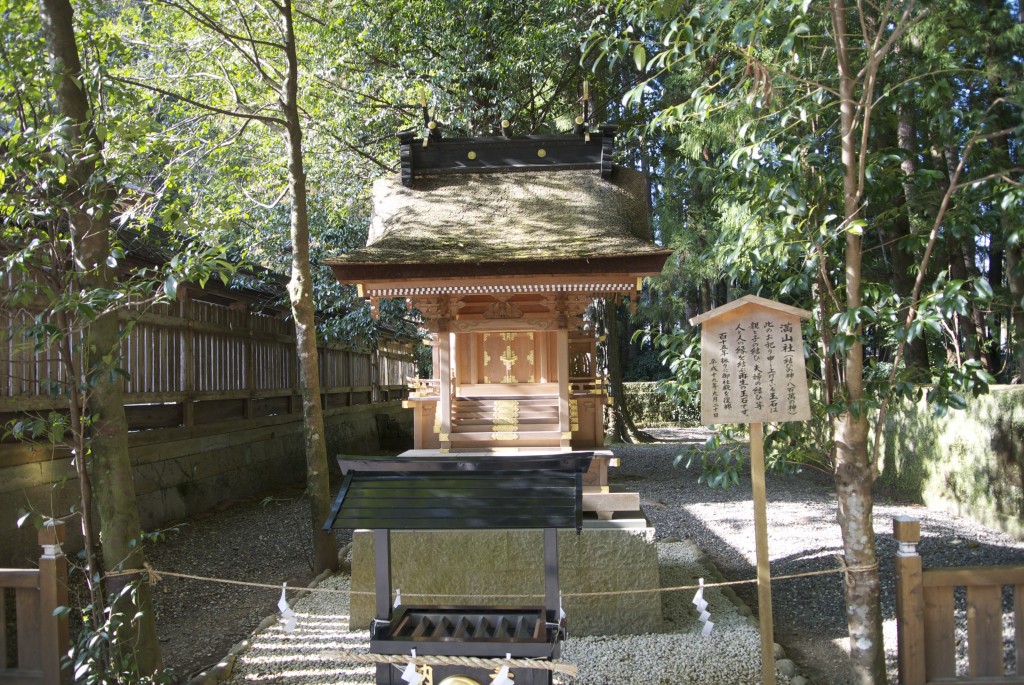
A little shrine tucked away at the back enshrining amongst others 'yaoyorozu kami' - the whole eight myriad of them!

Leave a Reply